You can pick up a bicycle in one place in the city and return it to another. There are pedal assisted bicycles at your disposal, that give you the opportunity to move quickly, independently and sustainably.
You can pick up a bicycle in one place in the city and return it to another. There are pedal assisted bicycles at your disposal, that give you the opportunity to move quickly, independently and sustainably.
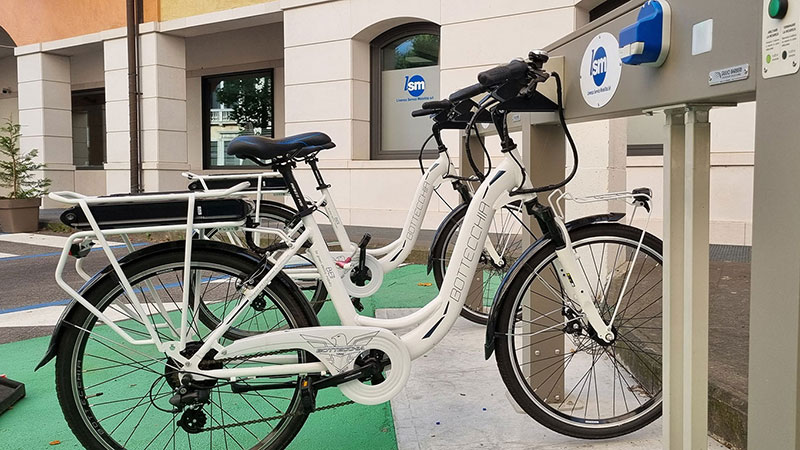
Campo Marzio: e-bike rental + 1 place for charging private e-bikes
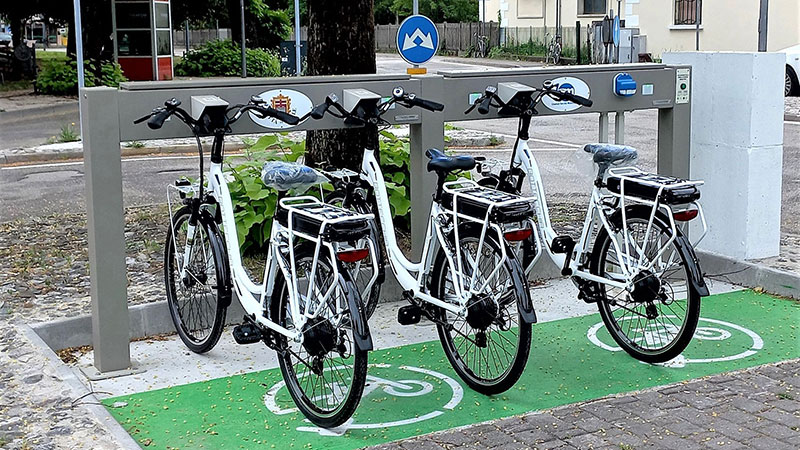
Piazza Libertà, in front of the railway station: e-bike rental + 1 place for charging private e-bikes
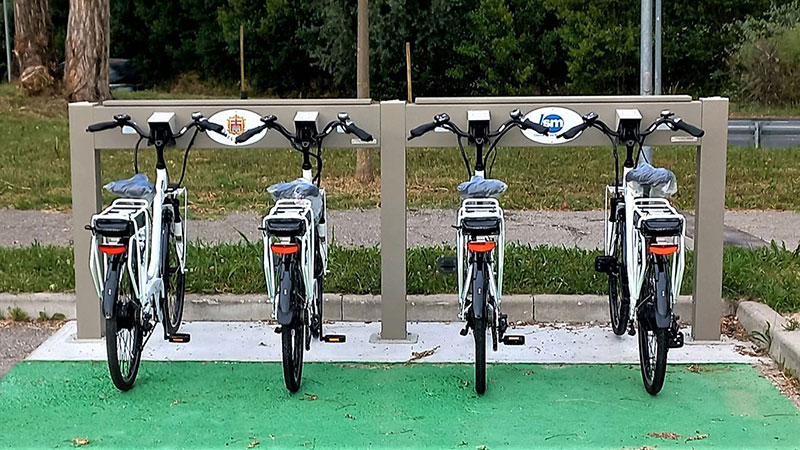
Sports Hall “PalaMicheletto” in via Cartiera Vecchia: e-bike rental
It’s easy!
Rates:
from 0 to 3 hours > € 0.50 every half hour or part thereof (max € 3.00)
from 4 hours to 6 hours > € 1.00 every half hour or part thereof (max € 6.00)
After the 7th hour > € 20.00 up to 24 hours of use
See the term of use
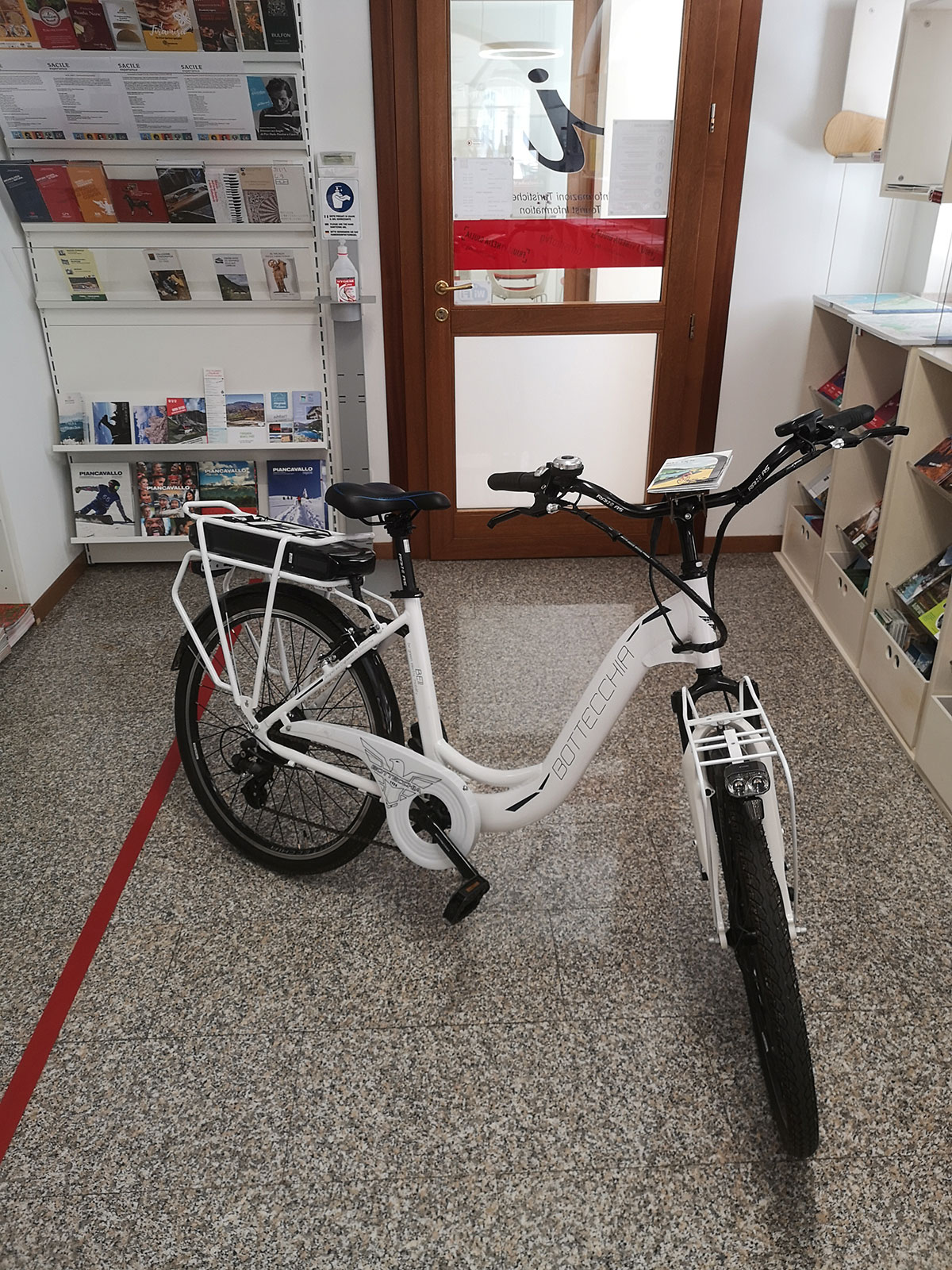
Column for the maintenance of the bicycle
The column for the maintenance of the bicycle is located in Foro Boario and it is equipped with tools, air pump with universal connection and Schuko socket for E-Bike charge.
Discover Sacile and surroundings
On www.visitsacile.it and at the Sacile Tourist Office you can find a cycling map to discover the area by yourself and suggested cycling routes with maps, descriptions, useful information and gpx tracks.
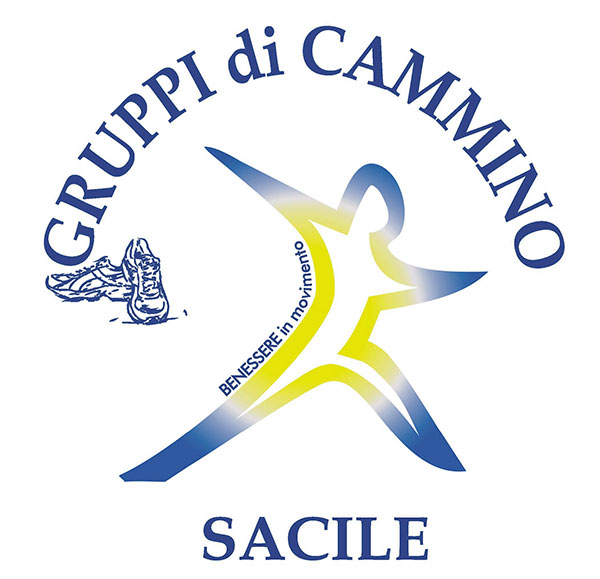
The scheduled appointments in the city to walk along an established route, urban or suburban, guided by a walking leader are the following:
Departures are subject to changes throughout the year, depending on the season.
Participation is free and open!
Info and contact details:
Gruppi di Cammino Sacile, tel. +39 0434 787111, email camminosacile@gmail.com
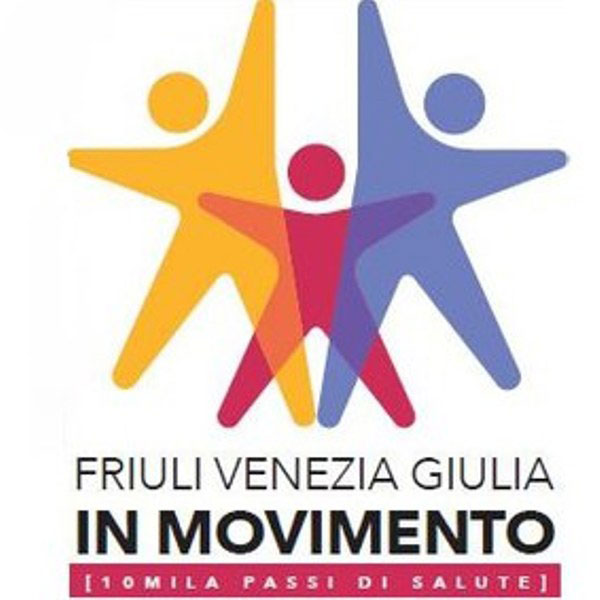
The antique and attractive town of Sacile, called the ‘Garden of the Serenissima’ during the Republic of Venice, is the westernmost municipality of the Friuli Venezia Giulia region. Sacile can be considered a ‘water town’, since it originated and developed along the banks of one of the most important rivers in Friuli, the Livenza (1).
The route, and the cycling track running along the Paisa Stream (2), an affluent of the Livenza River, are both dedicated to the memory of Denis Zanette (1970-2003), the cycling champion from Sacile who died prematurely. The route is part of the urban development project of the Town of Sacile started at the beginning of 2000, to promote healthy lifestyles and prevention in its different aspects, as indicated by the WHO and the Italian Network of Healthy Cities, of which Sacile is a member.
This route develops in the city of Sacile for about 4 kilometres. It is suitable for families, elderly people, walk groups, nordic walking and more. It is mostly a pedestrian and cycling track and develops on existing trails.
Its starting point is the parking area of Via Carducci, in front of the ‘Forum Due Mori’ (3) social centre, an aggregation and reference place for many inhabitants of Sacile, mostly elderly.
The route then partly runs along the existing ‘Denis Zanette’ pedestrian and cycling track and continues through San Liberale, until it returns to the historical centre through Viale Trieste, Via Cavour, Corte Ragazzoni (4) and Ortazza Park (5).
The itinerary, mostly unwinding in a picturesque natural area, is magical. The remaining part of the route develops in the historical centre and is therefore equally fascinating and interesting.
Along the urban path, it is possible to admire the church of San Liberale (6) and the tower of San Rocco (7), erected between 1470 and 1485 to defend the town from the Turkish invasion. Of the five towers, this is one of the three still standing. The towers were connected to each other by underground tunnels, which originally, together with a wall, defended Sacile.
Another attraction worthy of a visit, and perhaps the most representative building of Sacile’s past is the elegant 16th-century Ragazzoni Palace (8), which bears the name of the last illustrious family of Venetian ship-owners and merchants who lived there.
An itinerary in Sacile’s historical centre is an opportunity to walk among its most ancient boroughs, its monuments of great historical and artistic interest, its natural panoramas created by the river Livenza. This itinerary starts from the train station and will lead visitors through the city’s most characteristic aspects.
From the train station, a short walk along Via G. Lacchin leads to Via Dante and, from there, to Campo Marzio with Palazzo Ettoreo and Palazzo Candiani. On the background, the river Livenza draws one of its most beautiful bends. A pedestrian bridge to the Duomo provides an evocative view on the river, on the old towers from the Commune period, on abandoned electrical stations and on the buildings in Piazza del Popolo. The pedestrian bridge leads directly to Piazza Duomo, almost a small Venetian square, located on one of the two islands created by the river, and once called “City”. Piazza Duomo is home to Duomo di San Nicolò, Palazzo Ovio Gobbi, Palazzo Carli with Centro Studi Biblici and Galleria Pino Casarini, and Chiesetta della Pietà. Historically, this is the most ancient part of the city, which was the heart of trade, while Piazza del Popolo was a residential area for the noble.
From Piazza Duomo, two ancient “contrada” branch out: Via Pujati (Contrada Ruga) and Via Gasparotto (Contrada Montalbano).
They host houses with porticoes and ample columned ground floors, in accordance with the classic structure of workshops in the Commune period.
The two Contradas lead to Foro Boario (Pra’ Castelvecchio), where precious glimpses of the ancient defence system of the city can be caught: remains of strong walls and a perfectly preserved round tower.
From Parco di Pra’ Castelvecchio, Via Mazzini leads to Vicolo del Livenza: a small pedestrian route ending in wooden bridge which leads to Parco dell’Ortazza.
After a pause in the green scenery, the Courtyard of Palazzo Ragazzoni can be reached: its 12 stucco statues on the two floors along the internal façade of the Palazzo anticipate the rich artistic and historical heritage on its inside
Visiting the Palazzo means admiring the frescoes painted by F. Montemezzano on the noble floor, and the stucco decorations of the Cappella Gentilizia. Outside the Palazzo, along Via Cavour it is possible to gaze at the elegant 17th and 18th-century buildings, like Palazzo Granzotto and Palazzo Sartori, which is close to the round tower of S. Rocco. Opposite the tower, a small road leads to Ponte delle Prigioni, a bridge named after the fact that it ends in Piazzetta Manin, which used to host the ancient prisons. The bridge offers a unique sight on the branching of the river Livenza at the entrance of the city. Piazzetta Manin is close to Piazza del Popolo, the ancient “Portus Sacili”, a dock for merchant boats. Also known as Piazza del Mercato, for many centuries it has been the heart of “Sagra dei Osei”, an historic exhibition which takes place every year on the first Sunday after August 15th.
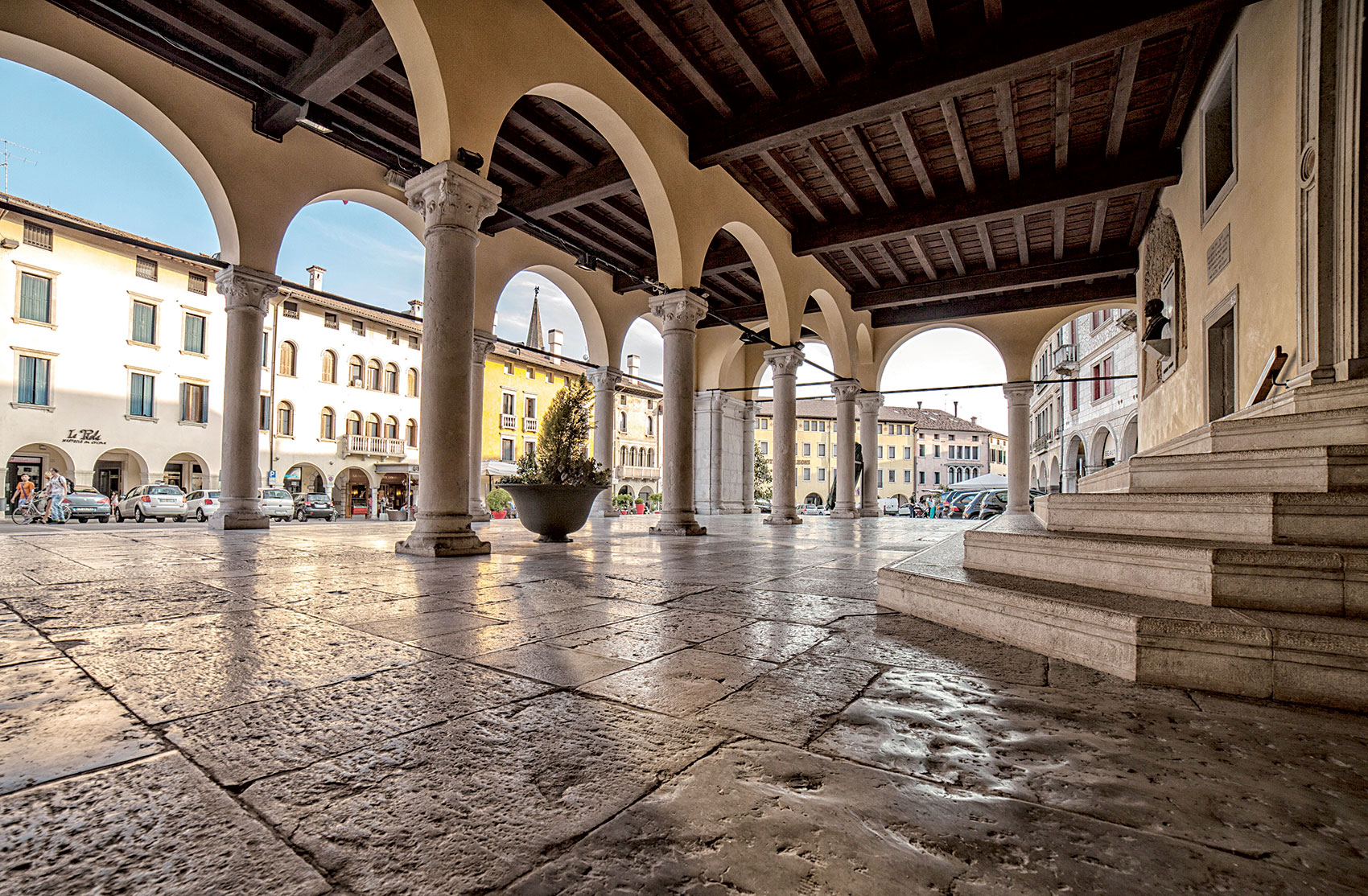
The view spans on the piazza, with its skyline made of warehouse-buildings, three of which are of particular interest: Palazzo Fabio-De Zanghis, Palazzo Loschi and Palazzo Pianca. To the right, the 14th-century Palazzo Comunale stands like an ample stage. The itinerary goes on to Ponte della Vittoria, a bridge offering a marvellous panorama on the mountains and on another branch of the river Livenza with Canale della Pietà and the apse of the Duomo. To the right, after the native house of the painter Luigi Nono (19th century), the curve-shaped Via Garibaldi hosts 17th and 18th-century buildings with porticoes and significant ancient architectural elements. The most interesting buildings in this road are Palazzo De Casagrande, Palazzo Prata and Palazzo Doro.
Halfway through the road, to the right, Ospitale di San Gregorio and Chiesa di San Gregorio, with its elegant bell tower, witness the historical role of this part of the city: this is the ancient Borgo San Gregorio, a borough which used to be at the entrance of the city in the Middle Ages. At the end of Via Garibaldi, after Piazza IV Novembre, Via XXV Aprile leads to the 16th-century building Palazzo Bellavitis. By turning left in the small piazza, Viale Lacchin leads back to the train station, the starting point of this itinerary aimed at discovering the city of Sacile.
The so called “Porton del Ponte de le Hore” was the silent guardian of the entrance to Sacile and the witness of the city life from XIV century until 1939.
The eastern gate of the city Torre dei Mori – The Tower of the Moors, was built in the XIV century over the castle gate that ran from the port (today a main square, Piazza del Popolo) to Borgo Ricco, and then towards Friuli, transforming one of the many towers placed along the walls of the city.
What was then called Torre del Porto, the Port Tower, because it was near the landing place for the boats that went up the Livenza, it was described in 1483 by Marin Sanudo as Torre dell’Orologio, the Clock Tower, with two wooden Moors that beat the hours on an ancient bell, cast in 1397, bearing inscriptions, decorations and the coat of arms of Sacile.
Rebuilt in 1582 by decision of the city council, the Tower of the Moors remained intact until 1917, when, with the Austro-Hungarian occupation, the two Moors were removed from the belfry and burned, while the bell was stolen and transported to an unknown foundry to be melted down for the war industry.
In 1927 the city council commissioned a new bell from the De Poli foundry in Vittorio Veneto and another pair of Moors from the sculptor Giuseppe Scalambrin, who made them in wood painted them to look like bronze.
A few years later, on Sunday 18 October 1936, a very strong earthquake seriously damaged the tower. It was then knocked down as far as the lower level of the clock face, pending a final decision on whether to demolish completely or restore it. In the end, however, practical questions concerning the road network for which the narrow passage was a real obstacle, prevailed over the historical value of the building. As a result, it was demolished in early 1939, but only after the two wooden Moors and the material that made up the clock were delivered to the city council.
A few ideas to visit the city of Sacile and its surroundings on a canoe.
Sailing on the river Livenza on a canoe means moving across the territory, reliving the ancient communication route to Venice, where goods and people travelled in both directions, when the always active mills of Sacile used the almost constant water flow of the river to attract goods to be processed and the wood travelling to the Arsenale in Venice from the forest of Cansiglio.
The canoe allows to see the city of Sacile and its surroundings with new eyes, discovering a lively, unexpected natural environment which is unknown to most people. This exciting trip combines art, history and nature, reaching the territories of the nearby towns of Brugnera, Fontanafredda, Caneva and Polcenigo.
A canoe is an open, versatile watercraft, with two or more seats, propelled by a single-bladed paddle, similar to the boats used by Northern American indigenous tribes. Canoes are used for tourism, fishing, sports or exploring.
A canoe does not create pollution, waves or damages. It flows silently and does not inconvenience the fauna living above and under the water.
A canoe is perfect not only for sports competitions, but also as a sport for everybody, offering intense emotions and lots of fun both to the elder and the young.
The river Livenza can also be sailed on kayaks, which require specific technical skills according to the difficulty of the trail, or on a Raft (Rafting), for a funny tour in company.
Idea
Itinerary
River itinerary
Average time
Difficulty
Sacile: a glimpse from water
Sacile city centre – panoramas of the city and the river
1 km
40 minutes
easy
The tranquil waters of the river Livenza
Fontanafredda (Chiesetta S. Antonio A.) – Sacile city centre
5 km
1 hour
easy
Among the meanders of the river Livenza
Sacile city centre – Cavolano
6,5 km
1 hour
medium – difficult passages
The countryside from the river Livenza
Sacile city centre – Caneva (Fiaschetti hamlet)
Possible with return to Sacile (average time 3.5 hours)
6 km
2 hours
easy
From the city to Villa Varda – on the traces of the noble
Sacile city centre – Villa Varda, Brugnera
15 km
2,5 / 3 hours
medium – difficult passages
Sacile: a glimpse from water
Itinerary: Sacile city centre – panoramas of the city and the river
River itinerary: 1 km
Average time: 40 minutes
Difficulty: easy
The tranquil waters of the river Livenza
Itinerary: Fontanafredda (Chiesetta S. Antonio A.) – Sacile city centre
River itinerary: 5 km
Average time: 1 hour
Difficulty: easy
Among the meanders of the river Livenza
Itinerary: Sacile city centre – Cavolano
River itinerary: 6,5 km
Average time: 1 hour
Difficulty: medium – difficult passages
The countryside from the river Livenza
Itinerary: Sacile city centre – Caneva (Fiaschetti hamlet). Possible with return to Sacile (average time 3.5 hours)
River itinerary: 6 km
Average time: 2 hour
Difficulty: easy
From the city to Villa Varda – on the traces of the noble
Itinerary: Sacile city centre – Villa Varda, Brugnera
River itinerary: 15 km
Average time: 2,5 / 3 hours
Difficulty: medium – difficult passages
A holiday in Sacile can turn into an opportunity to live a genuine experience, in silent contact with nature in the deep green of the vegetation mirroring in the waters of Livenza.
Born many centuries ago, leisure fishing is an art which has evolved quickly in terms of philosophy, techniques and tools. Originally aimed at survival, today it is always more and more triggered by the desire to plunge in the environment and be part of it, of living in nature by confronting it.
In this regard, the river Livenza has much to offer: its waters are extremely varied, with river bottoms ranging from rocks, to lush vegetation and mud. Sacile also hosts a significant quantity of fish: graylings, various species of trout, chubs, carps, common rudds and eels. Fishing is a fruitful activity in Sacile.
Fishing is regulated by a specific regional body, Ente Tutela Pesca del FVG, and is allowed starting from 7.00 a.m. of the last Sunday of March until the last Sunday of September. Exceptionally, at the dead lake in Cavolano, fishing is allowed all year round, even though limited to specific species. In the city centre, part of the river is a “no kill zone”, where fishing is allowed only with artificial tools.
The activity is subject to an authorization which can be daily, weekly, monthly or yearly.
For information on opening hours and mandatory authorizations/permits:
Address: Via S. Quirino, 9 – Pordenone
Tel: 0434 550588
Website: http://www.etpi.fvg.it/
Hours: Monday, Tuesday, Thursday 9-12
Address: Via Mazzini, 2 – Palazzo Badini
Tel: +39 0434 520381
South of Sacile, on a small hill close to the river Livenza, Chiesa di San Giovanni Battista can be found: an ancient church whose architecture and decorations are of particular artistic and historic interest.
The origins of Chiesa di San Giovanni Battista are traditionally set around 1300, even though the first traces of its presence date back to 1233.
The rectangular building has one nave housing the main body and presbytery. The ceiling features wooden trusses and bricks, while the vault is covered in plaster; on its outside, it features two slopes. The presbytery and altar are directed towards East, as a reference to the places where Jesus lived. The external bell gable stands on the entrance façade.
The access to the church was paved during the 20th century and designed with a strong symbolism: marble tiles of different colours depict the cross, the water of river Jordan, John the Baptist and the Baptism of Jesus.
Its inside hosts precious post-Byzantine frescoes ascribed to the 16th-century Venetian-Cretan school: above the triumphal round arch leading to the altar, God Father is flanked by the announcing Angel and Virgin Mary, while below them some frescoes depict the Saint apostles Peter and Paul. On the right wall, the Baptism of Jesus at the river Jordan features the kneeling figure of a donor holding a book, dated 1593. The left wall hosts a work in a different style, ascribed to Girolamo Stefanelli, depicting Madonna on throne with Child and two standing saints, Saint John the Baptist and Saint James the Less, with the words “S. Carlo de Vettor ha fatto fare per suo avodo et devocion MDLXXXXIII” (Sir Carlo de Vettor commissioned this work as a vote and for devotion in 1593).
Behind the altar, an ancient crucifix by an unknown artist from Cadore area is visible. The wonderful lime wood polychrome sculpture dates to the 16th century, while the cross is more recent. Its current position in the church sums up the fundamentals of Christian faith: incarnation, death and resurrection (Annunciation fresco, Crucifix, Mass altar). In the early 18th century, this splendid work witnessed a “miraculous” event recorded in the Parish register of Francenigo hamlet.
On the left side wall, towards the centre, a sort of tabernacle with a niche hosts a modern statue of Saint Anthony from Padua, while on the right side wall a 21st-century canvas depicts Saint John the Baptist baptising Jesus.
The church also enshrines a splendid bronze Way of the Cross by contemporary sculptor Giorgio Igne donated by Mazzon families of Sacile. This work reinforces all the expressive traits of the artist, often choosing religious themes reinterpreted under the light of discovery of the contemporary world. His strong language expresses an art preserving history, carving the truth inside everybody’s conscience.
The temple of San Liberale solemnly stands at the end of Viale Zancanaro: it is the guardian of Sacile’s co-protecting Saint.
With an history of demolitions and reconstructions, the origins of Chiesa di San Liberale can be found in the wake of a miracle.
According to the legend, a local peasant was ploughing the land with two oxen which suddenly kneeled before some human bones that had been brought to light by the plough. The event was regarded as a miracle: a small shrine was built on the spot and consecrated to Saint Liberal the Confessor, attracting the faithful from neighbouring villages.
In 1683, the shrine was replaced by a temple. In July 1694, the remains of a Roman soldier named Liberal, who converted to the Christian faith and who died as a martyr, were brought from Rome’s catacombs to the temple.
In 1917, during enemy occupancy, the church was profaned and damaged. In 1926, it was demolished and rebuilt on the same spot with its current shape, with the plan of making it an ossuary for the local people who were killed in the Great War. The project was developed by engineer Riccardo Bertoja, who was inspired by the famous painting “The Marriage of the Virgin” by Raphael.
The works for the new temple went on for decades. Only at the beginning of the Sixties, it was opened to worship and the remains of the Body of Saint Liberal were definitively placed on the main altar.
The inside of the temple is completely circular and shows its architecture and style; no artistic decorations were provided for in its project.
Chiesetta di San Daniele is located in the ancient hamlet of Topaligo, “a castle, now small villa in the territory, just half a mile outside Sacile, in the direction of the door of Saint Anthony”.
Chiesetta di San Daniele is a small religious building located in the hamlet of Topaligo, an ancient borough South of the railway station, inhabited from the Langobard period. The meaning of its name got lost in the course of its long history: “place rich in poplars” or “place connected to salt trade”.
The church was built around 1100 near a castle which was destroyed towards the end of the 12th century. The current structure dates to the 15th century, although some sources quoted Chiesa di San Daniele in connection with pastoral visits in the years 1512 and 1554. Contrary to other churches in Sacile, which were property of the Patriarchs of Aquileia, it has always belonged to the Diocese of Concordia and is up to date the beating hearth of Topaligo.
Its inside shows precious and visible frescoes from the 14th century, valuable works depicting a crucifixion and saints, and a 15th-century fresco with Saint Sebastian.
The valuable large picture (oil on canvas) was an altarpiece and dates to the 17th-18th century. It depicts a Madonna with Child, S. Daniel with the Lion and S. Florian with the ox.